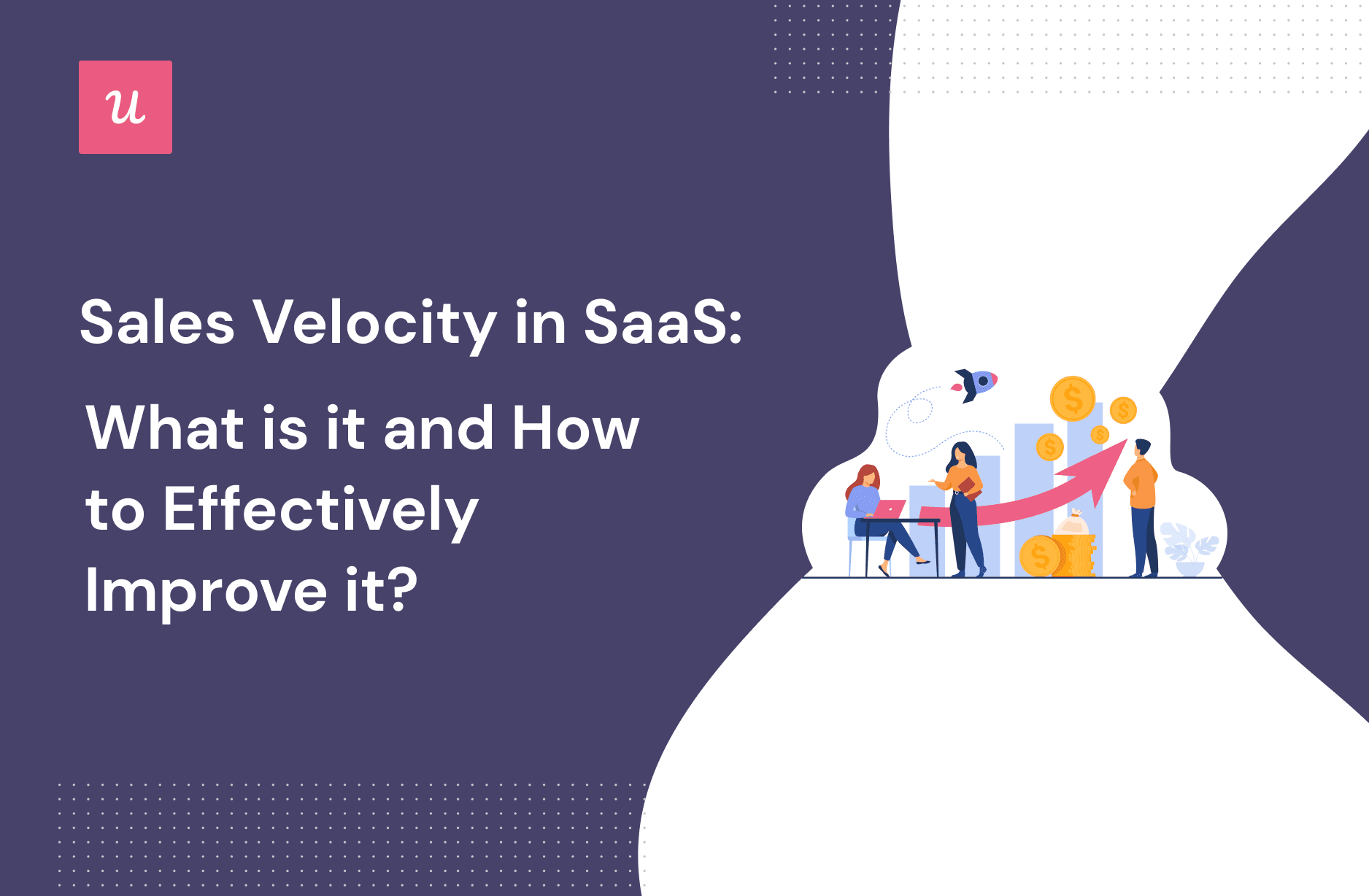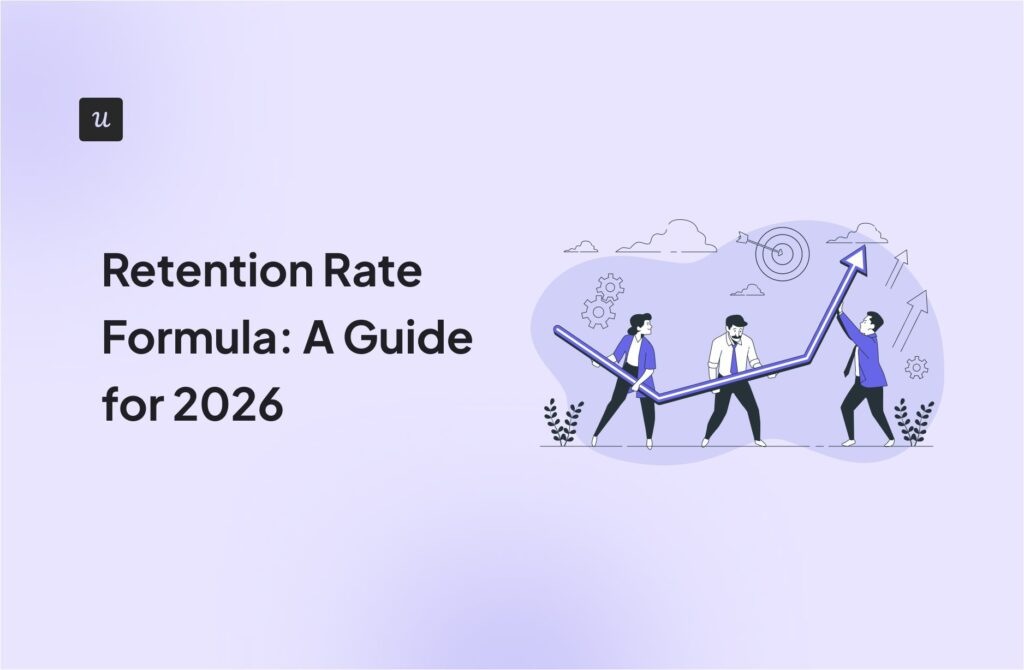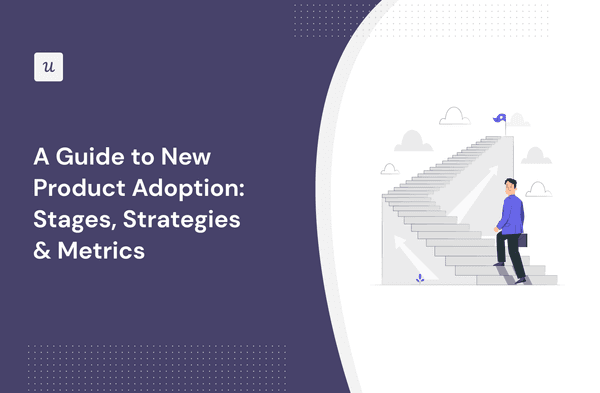
What is the SaaS velocity formula? You might be wondering how “velocity” factors into SaaS when you read about it in physics. Well, in this case, too, velocity has something to do with speed.
Many SaaS companies don’t give enough importance to the SaaS velocity metric, yet it’s one of the key sales metrics.
So, what exactly is SaaS sales velocity, and how can it help you boost revenue? Let’s find out.
Try Userpilot Now
See Why 1,000+ Teams Choose Userpilot

Summary of sales velocity in SaaS
- The SaaS sales velocity is a measure of how quickly your sales team can turn a sales opportunity into a closed-won deal.
- The SaaS velocity formula calculates the expected amount of revenue your sales team can generate during a specific sales cycle. To calculate it, multiply the number of sales opportunities by the deal value and the win rate, then divide the result by the length of the sales cycle.
- The higher the sales velocity, the better the financial health of your business, and the greater your ability to grow sustainably.
- The four variables of sales velocity that you should track are the number of opportunities, win/conversion rate, average deal size, and sales cycle length.
- Many sales leaders have determined that a good sales velocity meets 70-80% of the set sales quota. However, it’s always better to use the metric as a guide to set practical sales goals and know the probability of achieving them.
- You can improve the sales velocity by increasing the number of opportunities, conversion rate, and average deal size and decreasing the sales cycle length.
What is SaaS sales velocity?
Sales velocity measures how quickly your sales team can turn a sales opportunity into a closed-won deal.
It’s a vital metric for all businesses, regardless of the size. This is because it allows sales leaders to assess their sales process, forecast revenue, speed up the sales cycle, and allocate better resources to the sales representatives.
How to calculate the SaaS sales velocity formula?
The SaaS velocity formula gives the expected amount of revenue your sales team can generate during a specific sales cycle.
To measure sales velocity, multiply the number of sales opportunities by the deal value and the win rate, then divide the result by the length of the sales cycle.
Here’s a visual representation of the sales velocity equation.

The best practice is to measure the sales velocity regularly and then compare the past and present values. This lets you modify your sales and marketing strategies accordingly to drive revenue growth.
Why is tracking sales velocity important?
The sales velocity is directly tied to a company’s financial health and its capability to grow successfully.
The quicker you sell, the better it’s for your business. Your sales teams need to be able to move prospects down the sales pipeline and turn them into closed-won deals. This translates into a high sales velocity.
Moreover, this metric helps teams figure out which steps in the sales process are useful and which steps are making them leave. Plus, tracking sales velocity and its associated factors help companies optimize processes to become successful.
Note that your sales teams, business, and industry in which you operate are all prone to changes. Thus, measuring the sales velocity after any particular change will help you understand whether it had a positive or negative impact on both the sales team’s efficiency and the business.
Companies can also measure sales velocity by market segments since the metrics can differ very widely.
For example, a B2B SaaS company may be in business with small, mid-size, and enterprise-level companies that vary vastly in terms of sales cycles and customer lifetime values. This helps them realize what client size suits them the best.
What are the four variables of SaaS sales velocity?
One simple SaaS velocity formula won’t help you unless you dive deeper into the factors that contribute to it.

Here are the four variables that you should track:
- Number of Opportunities
- Win/Conversion Rate
- Average deal
- Sales cycle length
Number of Opportunities
This is the number of sales deals present in your pipeline during a given period, all of which must be qualified opportunities. Your bottom line will be at a disadvantage if your pipeline is full of bad leads, and there’s significantly less chance of closing any deal.
Simply measure how many leads qualified within the period. These leads are the ones with the appropriate needs, budget, authority, and time frame for your solution.
To measure this number, you need to define both sales-qualified leads (SQLs) and marketing-qualified leads (MQLs) and decide whether you want to account for both.
Win/Conversion Rate
The win rate or conversion rate is the percentage of qualified leads you convert to customers within the specified period. It’s equal to the number of closed-won deals and the total number of opportunities.
The conversion rate not only indicates how well your leads have been qualified but also proves how successful your present selling efforts have been. If you find a point where leads are leaving, you should take action to fix it.

Average deal size
Based on your pricing model and the industry you’re operating in, the average deal size can either mean average sale price or average deal value. For a subscription-based SaaS business, average customer lifetime value will be a better option.
It’s the only variable of sales velocity that is directly correlated with profits.
Your company’s average deal size is equal to the total revenue from all your deals divided by the number of deals. You can improve the average deal value by providing offers and add-ons that users can’t resist.

Sales cycle length
Time is perhaps the most valuable resource to both you and your prospects. Thus, contrary to the other factors, the average sales cycle length is the only variable you must not allow to increase.
The average sales cycle is the time taken by a prospect to progress through your sales pipeline. You can calculate it by dividing the total number of days for all deals by the number of deals. You can also measure it in weeks or months.

The sales cycle length is determined by the cost, the number of steps in the sales process, and the degree of complexity of your solution.
To close deals faster and optimize your sales cycle, you should build a more efficient sales process and maybe even redefine your sales strategy. However, keep in mind that more complex products or services require greater lead nurturing and thus, more time.
Moreover, don’t rush into things. Check each of your prospect’s pace and adapt your efforts based on it.
What is a good SaaS sales velocity figure?
There’s no universally good SaaS sales velocity figure. The right amount depends completely on the company.
According to many sales leaders, a good sales velocity meets 70-80% of the set sales quota. However, it’s always better to see the metric as a guide for setting practical sales goals and knowing the probability of achieving them.
In general, the higher the sales velocity, the more revenue you earn. However, there’s a possibility that a high sales velocity may indicate the presence of some potential issues.
For instance, your sales team has been forecasted to bring in $60,000 this month, more than the set quota. But you don’t have the support resources and customer retention to sustain that revenue for the long term.
This suggests that your team’s high sales velocity results from large deal value instead of a healthy number of qualified leads.
Thus, if your pipeline decreases in size only a little bit, your team will lag behind quickly.
SaaS sales velocity example
Now, let’s look at a SaaS sales velocity example.
Suppose you’re a B2B business and your sales team has 50 deals in the pipeline. The average deal size is $2,000, and the average conversion rate is 30%. Also, it takes 25 days, on average, to convert qualified leads to paying customers.
To calculate sales velocity, the SaaS velocity formula will be:
Sales velocity = (50 x $2,000 x 0.30) / 25 = $1,200 per day
Therefore, your team should generate $1,200 per day. You can compare this value to the weekly, monthly, or even quarterly quotas set. If your team is not on the right path, reevaluate the sales process and modify goals as necessary.
How to improve SaaS sales velocity?
Is your sales team having trouble reaching the quota? You can improve the sales velocity by targeting the variables that affect it.
Here are some tips for you. Let’s see how you can do that.
Improve SaaS sales velocity by increasing the number of opportunities
As has been previously mentioned, it’s not enough to have a pipeline packed with leads. You must have an adequate number of qualified leads to maximize the number of closed-won deals.
It’s better to have a few high-quality leads than several low-quality ones. Thus, to get a good number of opportunities, focus on quality rather than the number of leads.
Furthermore, choose the solution that works the best for your company. If your solution has a high sales velocity for small and mid-size firms but has a much lower value for large enterprises, don’t approach them suddenly with an offer. Take time to expand the user base.
Improve SaaS sales velocity by increasing conversions
Be it an unresolved problem or the entry of a new competitor, there are multiple reasons for prospects to leave before closing a deal.
To increase your conversion rate, it’s crucial to understand where and why your prospects are exiting the pipeline.
You must conduct a thorough sales discovery towards the start of interactions with a prospect. Try to understand their needs and show how your business can add value to them.
Don’t just point out the benefits of joining your business but also highlight what they would be missing out on if they don’t.
Improve SaaS sales velocity by boosting the average deal value
The most critical aspect of the average deal size is matching prospects’ perception of your product’s value with its price.
Focus on the pain points and needs of the prospects when you sell. Get your sales reps to customize their presentation to each prospect and showcase how your solution will benefit them.
However, when selling, customers shouldn’t feel that the sales rep is just trying to meet the target. Instead, they should feel like talking to a consultant who’s offering them a useful solution.
Creating strong and mutually beneficial relationships with clients helps you close more deals.
Improve SaaS sales velocity by shortening the sales cycle
No deal is going to take the same amount of time. It usually takes longer to sell to large companies since they have more stakeholders and requirements.
Thus, you need to know the size of the business and how quickly they need a solution to estimate how long it will take you to close a deal.
Try to close the smaller deals faster. Give more value and time to better opportunities with bigger clients. This will give you more time to prepare for deals with a greater impact.
Moreover, reach out to a lead immediately once they are qualified. If a lead reaches out to you with some issues, prioritize them to resolve their problems as fast as possible.
You can also keep any relevant content ready for distribution to decrease the sales cycle length. All prospects and clients should be able to access product overviews, blogs, and how-to guides.
So, it’s a type of self-service support, where you won’t have to spend time answering repetitive questions.
Wrapping it up
Measuring sales velocity is key to understanding the overall financial health of your business.
Track the SaaS sales velocity and its four variables regularly. These four variables are:
- Number of Opportunities
- Win/Conversion Rate
- Average deal size
- Sales cycle length
This way, you can find where you’re lagging and take corrective actions. Once you notice patterns and understand what causes your sales velocity to increase, you can grow your revenue successfully.
Want to improve your SaaS sales velocity? Get a Userpilot demo and see how you can achieve sustainable revenue growth.






